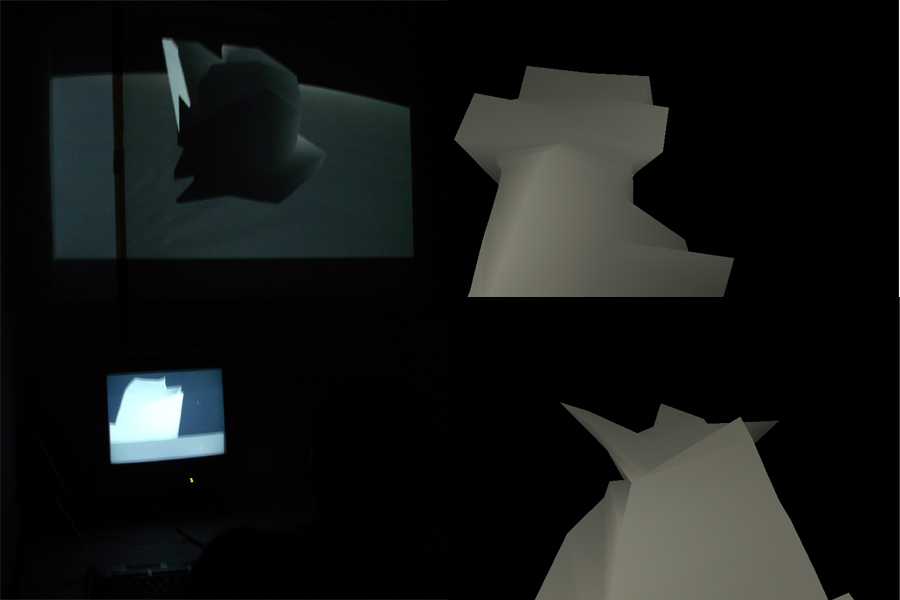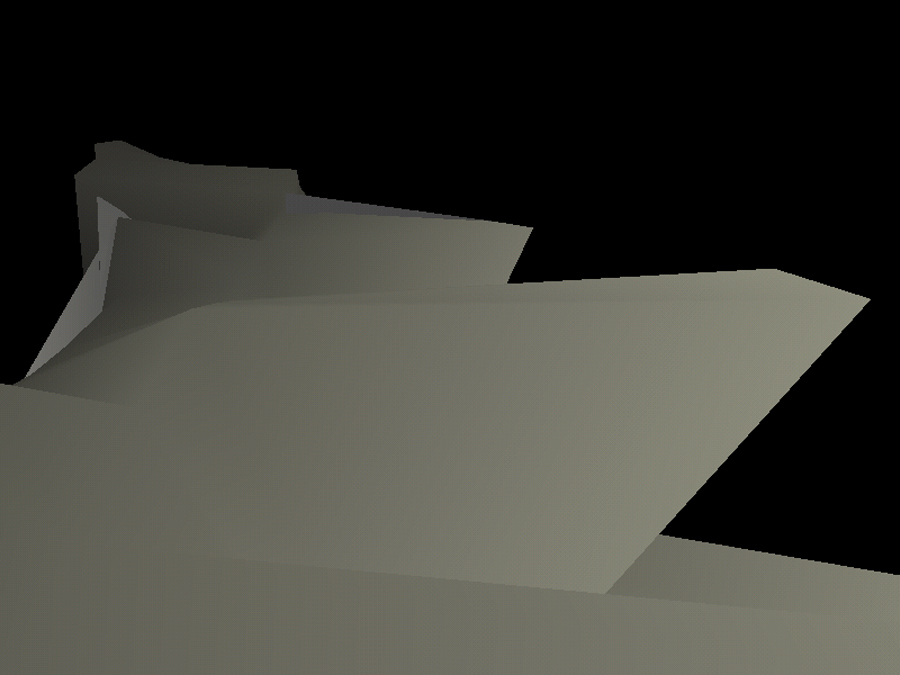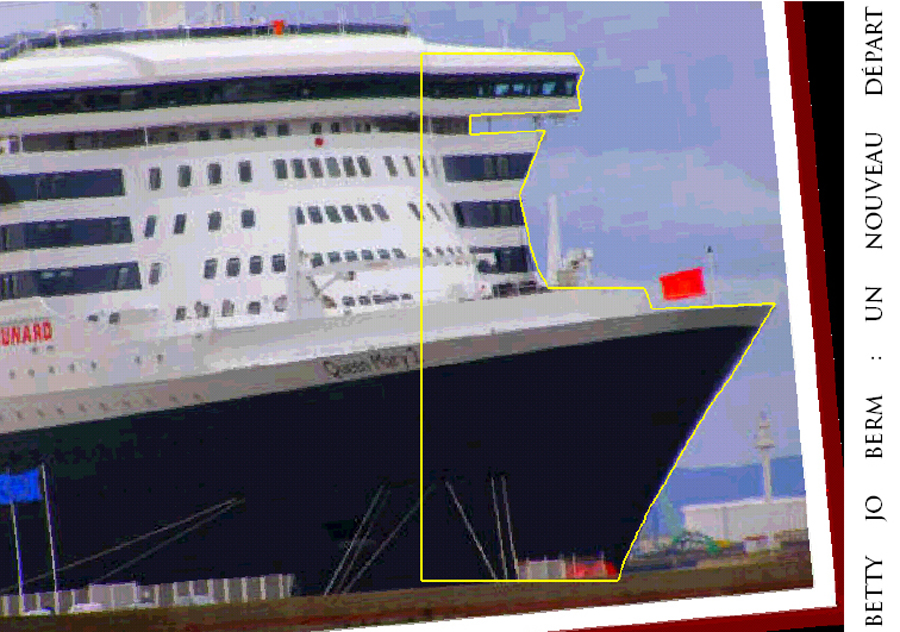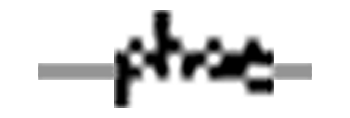
Basé sur un extrait de Au bout du labyrinthe de Philip K. Dick, ce travail se concentre sur l'impression solipsiste qui se dégage de la narration : les personnages font face à une architecture psychédélique qui apparaît à chacun d'entre eux sous une forme particulère, suggérant des hypothèses divergentes quant à sa fonction et annulant tout possibilité d'une synthèse par le dialogue.
Tirées des dialogues du livre, une collection de phrases résumant l'idée de chaque personnage se fait du bâtiment sont entrées dans Google Images afin d'en obtenir des allégories visuelles. Celles-ci sont ensuite analysées et traduites sous forme de coordonnées géométriques qui alimentent un logiciel, piochant dedans afin de dessiner la structure d'un édifice grisâtre.
Cette forme architecturale peut alors être explorée à la façon des jeux vidéos à vue subjective/à la première personne. Prenant le contrepied de la vision habituellement spectaculaire des images de synthèse, avec la caméra tournoyant autour d'un objet 3D (démonstration de sa complexité, gage de réalisme), le joueur ne peut ici compter que sur l'ordinateur pour maintenir la cohérence de l'objet virtuel dont il simule la perception, pour assurer la permanence objective de la “réalité”. Si le jeu ne comporte pas d'objectif, n'offrant qu'un désert et ce bâtiment autour duquel on peut tourner indéfiniment, il s'avère rapidement pour le joueur qu'il est impossible d'en appréhenser la forme entière : en effet, le programme change constamment la façade du bâtiment que le joueur ne peut justement pas apercevoir depuis sa position actuelle. Pouvant être joué en réseau, l'enjeu résiderait alors dans la coopération des joueurs afin de constituer leur propre représentation collective de cet édifice virtuel instable.
This work is based on an excerpt of A maze of death by Philip K. Dick ; it focuses on the solipsist feeling in the narration : the characters face a psychedelic architecture that appears in a different form to each of them, suggesting various hypothesis about its function and annihilating the possibility of a synthesis through discussion.
Picked from the dialogs in the book, a collection of sentences that summarize the idea that each character has of the building were sent into Google Images, so to obtain visual allegories. Then the images were analysed and translated into geometric coordinates that feed a software which picks up shapes amongst them to draw the structure of a greyish edifice.
This architectural shape can then be explored in the same way than subjective / first-person view videogames. Taking the opposite of the usual spectacular view for the synthetic images, with the camera swirling around a 3D model (as a demonstration of its complexity, a pledge of realism), the player can now only trust the computer to warrant the coherence of the virtual object of which it simulates the perception, to ensure the objective permanence of the “reality”. Though the game has no objective and only provides a desert that one can walk through and this building which one can infinitely turn around, it quickly becomes evident to the player that no one can get its entire shape : indeed, the software constantly changes the shape of the building's side that the player cannot see from its current location. Available in multiplayer mode, the purpose of the game could then consist in the players' cooperation in order to build their own representation of this unstable virtual edifice.



